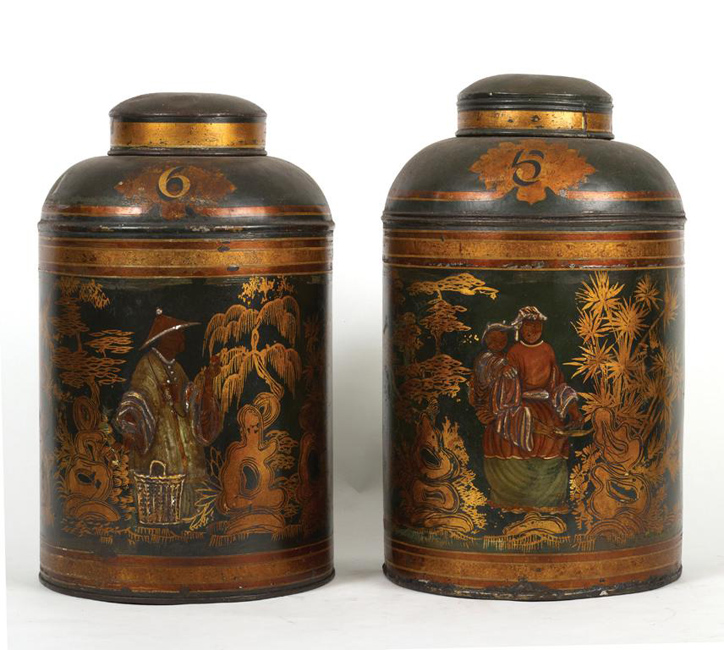Learn about antiques and collectables...
Click on a category below to show all the entries for that category.
Learn about and understand the items, manufacturers, designers and periods as well as the specialist terms used in describing antiques and collectables. Either click one of the letters below to list the items beginning with that letter, or click on a category on the left side of the screen to list the items under that category.
Campana Form Vases or Urns
Cast Iron Door Stops
Cast iron door stops, also called "door porters", were made in large quantities during the late 19th and early 20th century, and were made in a wide range of designs.
Being cast-iron, they were quite robust and they frequently come onto the market.
A popular character for door stops was children's character "Mr. Punch", sometimes with Judy. Door stops depicting fauna are also popular, particularly with Australian animals such as the kookaburra and kangaroo.
Charger
An oversize dish or plate in ceramic, silver, or pewter primarily made for display, but able to be used for serving at the table or on a sideboard.
Newlyn Copper
Newlyn is a town in southwest Cornwall, whose principal industry in the Victorian era was its fishing industry. By the 1880s it had also become an important centre for artists.
As employment in the fishing industry was sporadic due seasonal factors and weather an alternative and additonal source of income was sought, and it was decided that the fishermen could be taught to create craft works in copper, and other materials which could then be sold.
The Newlyn Industrial Class, as the workshop was known, was established in 1890, and a number of artists who had settled in the area assisted with the classes.
Copper objects produced in the Arts & Crafts style included trays, frames, chambersticks, plates and chargers, boxes, bowls and coffee pots. The designs on the objects often included nautical themes.
The workshop remained in operation until the outbreak of World War II.
Tankard
A tankard is a drinking vessel for beer, ale, and cider, similar in shape to a large mug, and usually with a hinged lid. Silver tankards were in use in Britain and other parts of Europe from at least the sixteenth century, pewter tankards probably from the thirteenth. In the 19th century a number of ornately carved ivory tankards were produced, but these were designed to demonstrate the skill of the carver, rather than for day to day use. The shapes of tankards vary, sometimes globular, sometimes a tapering concave. For those with lids, the lid usually includes a thumbpiece that the drinker can hold down to keep the lid open. Variation in the design of the thumbpiece include wedge, ball and wedge, ball, hammer head, bud and wedge, double volute (scroll), chair-back, ball and bar, shell, double acorn, corkscrew, and ram's horn.
Toleware
Toleware is painted and varnish-coated tin kitchen ware, made in imitation of the imported Chinese lacquer wares that were popular in the 18th century Britain, but difficult to obtain. The varnishing process was developed in the 18th century by Thomas Allgood, from the coal mining area of Pontypool in South Wales and it prevented the objects from rusting.
The varnish was created with asphalt, a by-product of the coal that was mined locally, mixed with shellac, and the mixture was applied to the thinly-rolled iron plate objects. This varnish was applied in several layers, each being fired at a high temperature, which rendered the finished object extremely durable.
The process was known as Japanning because it resembled the lacquer on Japanese trays.
The Pontypool factory remained in operation until 1820, but a rival factory in nearby Usk owned by two of Allgood’s grandsons, continued until the mid-19th century. Another member of the family founded a japanning factory in Birmingham, which became the main centre of the industry in Britain during the 19th century.
The process spread to Europe and the United States, where objects are still manufactured in the toleware style using modern processes and finishes.
Tudric
In 1903 Liberty & Co. released a range of high quality pewter under the name "Tudric". Apart from its interesting Art Nouveau Celtic inspired designs, Tudric pewter differed from other pewter as it had a high silver content. Much of it was designed by Archibald Knox, whose services Liberty & Co. had engaged from 1898 onwards. It was produced for Liberty by William Haseler of Birmingham.
See also: Liberty & Co.

